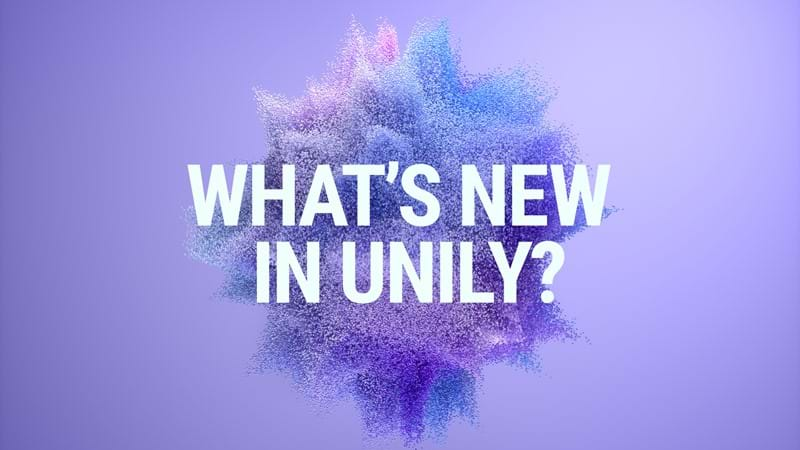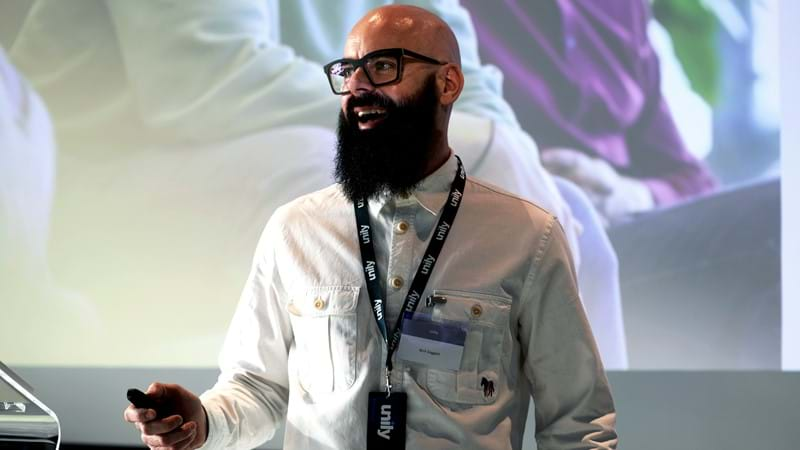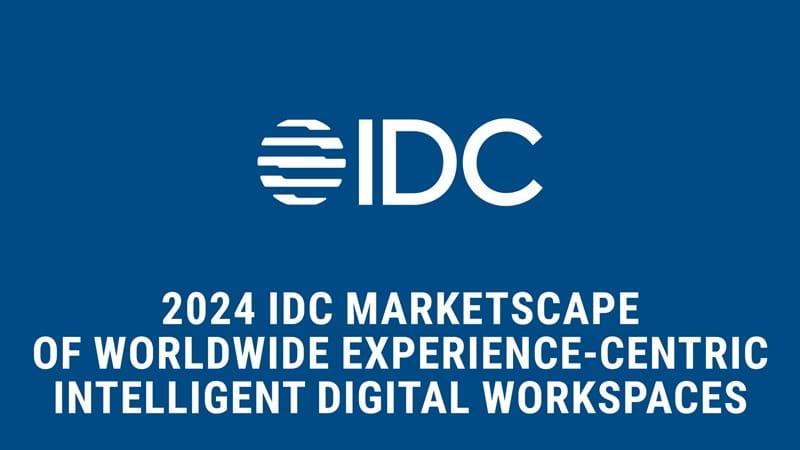Top 5 CIO trends to know for 2022
Today's CIOs are at a crossroads. After successfully navigating two years of transformation and change, they are tasked with setting in motion digital strategies that will define the coming decade of work. 2022 will be a turning point, where five key trends will prove decisive for years to come.

CIO trends will shape the future of work
2022 will mark a pivotal year for CIOs. The past two years saw reactive digital strategies come to grips with sweeping changes to the way of work in response to a global pandemic. Now, CIOs find themselves at a turning point.
A McKinsey global survey of C-suite executives found that in just months, the pandemic accelerated enterprises' digital transformation by three to four years. Today, CIOs have successfully weathered that storm, and the new imperative must focus on tying unprecedented transformation to business strategy.
In 2022, the pressure to shift from reactive IT investment to proactive digital strategy will intensify as CIOs take the lead in shaping employee experience, the tech landscape, and enterprise success for the coming decade. Within this shift, CIOs must address five macro trends that have emerged as critical to the hybrid future of work.
Platform-based work is set to dominate
Hybrid work is no longer the 'new normal' – it's just normal. As the defining mode of work for the future, the quality of technology we use to power hybrid working will underpin the success of businesses.
As employees rely more on enterprise technology to work, all eyes are on IT to deliver on a growing number of objectives. IT must support employees with sufficient tools and empowering experiences to fuel productivity. IT must align with other departments to equip each arm of the business with everything they need to succeed. IT must work arm-in-arm with leadership and the wider enterprise to support their vision for the future and meet business goals. IT must do all of these things while simultaneously finding solutions to their own challenges to consolidate technology, cut costs, improve security, and lead the organization toward new opportunities and innovations.
This pressure cooker scenario of mounting objectives is driving CIOs and IT departments to platform-based business models, which offer the features and flexibility to meet demands from all corners of the business. 2022 will mark a year in which CIOs, particularly those leading Fortune 500 businesses, double down on employee experience platforms and cloud-based work as an essential element of hybrid work.
5 top CIO trends that will define 2022
The decisions CIOs make in 2022 will influence the direction their enterprise takes in a decade defined by disruption, innovation, and technology.
To help guide successful digital strategies for years to come, we’ve mapped out five key trends that every CIO needs to be aware of to inform their decisions in 2022:
#1. A new generation of cloud-based work
The mass disruption of the early 2020s has accelerated enterprise cloud adoption further and faster than could ever have been predicted.
This leaves organizations poised to shift gears into a new generation of cloud computing, with half of CIOs planning to migrate more than 75% of enterprise workloads to the cloud over the next two years, per McKinsey. This new generation will see a mindset shift from IT leaders as they look to capture what McKinsey predicts as more than $1 trillion of value.
Instead of the cloud acting as a source of micro improvements to employee and IT productivity, this new age seeks to capitalize on the transformative value of the cloud and platform-based work. Cloud platform-based business models are set to dominate the future of work as an IBM study of businesses that collectively oversee $3.7trillion in revenue found that 94% plan to transform their operations to rely more on customer and employee experience platforms.
The savvy CIO should look to capitalize on this trend early, turning to holistic, cloud-based intranet experience platforms that offer the flexibility to cater to a range of use cases and workflows from all corners of the enterprise.
#2. Upskilling the hybrid workforce
Talent will be a valuable commodity in the coming decade, as remote work widens the talent pool and CEOs turn to IT to drive enterprises away from legacy processes and toward innovation. A Cisco survey of C-suite executives found that 85% of respondents believe the ability to attract, retain, and develop talent will be critical in the all-digital workplace, yet only 46% have plans in place to develop talent in 2022.
Hybrid work demands a new set of skills and places a greater premium on digital natives – those that grew up in the information age and thus are primed to excel in a model that relies on remote work technology. McKinsey has outlined the need for enterprises to prioritize a new skillset for the future of work:
"In the next decade, increased demand for technological, social, and emotional skills will occur, while there will be a decline in roles that require physical, manual, or basic cognitive skills."
To maintain a competitive advantage in a digital future of work, CIOs must take responsibility for training hybrid workforces in a new set of core competencies, including strategy, social responsibility, digital and cognitive capabilities, creative thinking, adaptability, and resiliency.
CIOs and IT must work in harmony with HR to deliver training and development programs that give employees the chance to learn where and when they want. An on-demand, self-service center for courses and resources must be available for all users. IT and HR will need to work in tandem with other departments to ensure upskilling opportunities are relevant for employees and offer value to the enterprise, modernizing a training model that looks increasingly obsolete in the hybrid future of work.

#3. Short-term solutions need long-term redesigns
Technical debt is the result of decisions that prioritize speed over quality, often the result of quick fixes taken over full-scale solutions. Many enterprises are currently dealing with the consequences of technical debt born out of short-term investments in point solutions that helped them through the pandemic. Resolving this technical debt will rank high on the CIOs wish list in 2022 as they look achieve at least 50% faster service delivery times to the business, per Gartner research.
In 2022, enterprise strategies will move from survival to growth, underpinning a shift from technology that facilitates work to solutions that optimize it. This shift leaves the CIO with a set of additional challenges that must be resolved with long-term IT strategies:
- Consolidate technology investments to cut IT costs
- Combat employee app fatigue and ease digital friction
- Develop greater organizational agility and resilience
- Tighten cybersecurity across an expanding network edge
- Move from legacy processes to innovation-based models
Boards expect the CIO to resolve this technical debt and take ownership of a new architecture that meets these challenges and ensures IT strategies remain agile in the hybrid future of work. Experience platforms with the flexibility to integrate third-party tools will need to take on a central role in simplifying a digital landscape that has become overly complex.
"CIOs who want to invest in new technology projects must provide a sense of certainty. Rather than big-bang investments, IT chiefs should encourage the board to spend on technology infrastructure upgrades that help stave off technical debt."
A singular digital home for all IT will help undo the damage done by investments in siloed solutions. By consolidating processes, workflows, and systems into a holistic platform, they are enterprises’ only hope of unraveling the complicated web of interdependent tools and policies brought on by technical debt.
The seeds for this strategic shift are beginning to take root, as Forrester revealed that optimizing digital experiences and offering a unified view of digital tools and channels has now become a top priority for more than 80% of C-suite leaders.
#4. IT must become strategic partners
While perhaps an unfair characterization, in many organizations IT have garnered a reputation as an obstacle to achieving business outcomes, not an enabler.
Seen as the gatekeepers to digital transformation, other departments often view IT as the last hurdle for them to push meaningful change through. A promising solution that could make countless employees’ lives easier can be vetoed for good by IT leaders focused on process-first rather than people-first approaches.
As enterprises increasingly rely on technology to facilitate work, this relationship must change. IT will need to enter into more collaborative partnerships with leadership and other departments in order to improve the digital employee experience and drive productivity and innovation.
" It should always be the business leading IT, otherwise it's like the tail wagging the dog. You've got to try and support that, and a technology like Unily is a great platform to support that single-pane of glass use case. We've put a lot of work into building an integrations framework that can actually integrate with hundreds, if not thousands, of third-party applications. The vision has to be layering the user experiences on top of the integration so you can provide what anyone in the business needs in just one or two clicks."
CIOs must work to reinstate IT’s position as valued business partners, focused on collaborating with the wider business to achieve positive outcomes for all. Instead of gatekeepers, IT must become trusted advisors that proactively help other areas of the business incorporate technology that supports their objectives and solves their challenges.
When IT is viewed as a business partner, departments can convey their long and short-term strategic objectives and ask technology leaders to recommend the capabilities that best suit those goals, including risks, costs, and timelines. As enterprises face a decade defined by agility and transformation, having CIOs and IT leaders advising on digital strategies for the wider business will ensure future investments align with business goals.
#5. Total experience starts from the inside
Total experience (TX) is the sum of an organizations’ experiences, combining multiexperience (MX) customer experience (CX), user experience (UX), and employee experience (EX). Total experience represents a holistic view of the enterprise, where each of these pieces intersects.
The future CIO can make significant improvements to customer and employee confidence, satisfaction, loyalty, and advocacy by taking a bottom-up approach to total experience.
In the hybrid workplace, where technology is the backbone of almost all employee, customer, and user interaction, enterprises must focus on innovations that help deliver exceptional experiences for all stakeholders.
Inside-out approaches to total experience are primed to deliver most value. Meeting the rising expectations of customers requires that employees are primed with the optimum environment to keep pace with customer needs. So CIOs must prioritize a renewed focus on employee needs, as bottom-up improvements to EX will have ramifications on an enterprise’s total experience.
As a result, employee experience platforms are set to take on an expanded role for IT in 2022. Where supporting staff with meaningful and productive DEX will be the CIOs top priority, experience platforms offer a solution to connect and empower hybrid workforces while tying IT priorities to business strategies.
The future of IT is the future of business
The trends that CIOs and IT face in 2022 are trends that will shape what the future of work looks like for all of us. Aligning IT priorities with business vision requires an agile platform that grows and evolves with enterprises, and cloud-based experience platforms have emerged as the ideal solution.
Get in touch with an expert today to learn how an evergreen employee experience platform can support your digital strategy in a hybrid future of work.
Get started. Get your free demo.
Reinvent your intranet for the employee experience era.
-
On-demand















